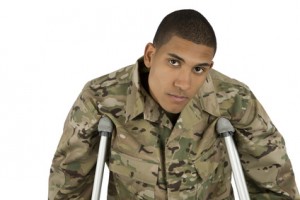In honor of National Nurses’s week, Sherry R. Siegel, R.N., M.S.N., C.H.P.N, is featured in an article on GoErie.com, relaying her story of being a nurse over the past twenty years.
Her story begins more than 20 years ago when she was a single mother with two children and lots of bills to pay. She was a waitress at the time and actually enjoyed that job, but the pay was not enough to give her family financial security (or health insurance). So she contacted a nearby college and asked the admissions counselor there what agree would be most likely to actually assure her a job. As a waitress she knew many people with college degrees who were nonetheless unable to find jobs in the area they had studied.
The admissions counselor told her, “Be a nurse. You’ll always have a job.” She took that advice, and enrolled in the college, graduating two years later with an associate degree in nursing.
She quickly found a job as a nurse, with a steady paycheck and health insurance, and then also discovered that she loved being a nurse.
My first nursing job was in cardiology and then I moved to home care. After a few years I became a hospice nurse, which was where I needed to be. I loved being a hospice nurse and became passionate about a good end-of-life experience for everyone. I believe in the hospice philosophy of living as well as you can for as long as you can. Isn’t this what everyone wants?
After 10 great years, I left hospice to become the palliative care coordinator at The Regional Cancer Center. I had learned so much during my time as a hospice nurse and hoped that I could use my skills and knowledge to help cancer patients maintain their quality of life while facing a life-threatening disease. While working with cancer patients and caregivers can be challenging and emotionally draining, it can also be rewarding. Cancer is a heartbreaking word and a life changing event for patients, their families and caregivers. Much can be done to address pain and suffering throughout the cancer journey if we take the time to listen.
As a palliative care nurse I provide symptom management and extra support to patients and caregivers. Patients who have their needs met have fewer psychosocial issues, such as depression, stress and worry, and are more likely to complete their cancer treatments. This allows patients with a life-threatening disease to live as well as they can for as long as possible.
Twenty years ago when I decided to be a nurse I never dreamed where this journey would take me. I have since received bachelor’s and master’s degrees in nursing and became certified in hospice and palliative care.
I love being a nurse and knowing that the little things I do to improve quality of life makes a difference. Nurses are members of the largest health care profession and the ones who have the most contact with patients and their families. This makes us, as nurses, the front line for advocating for patients and families in a very complex health care system. Every day we have an opportunity to make a difference. Let’s recognize these opportunities, and then use our skills and knowledge to make a difference.
Happy Nurses Week to all fellow nurses. Go out and do what we do best: Care!









